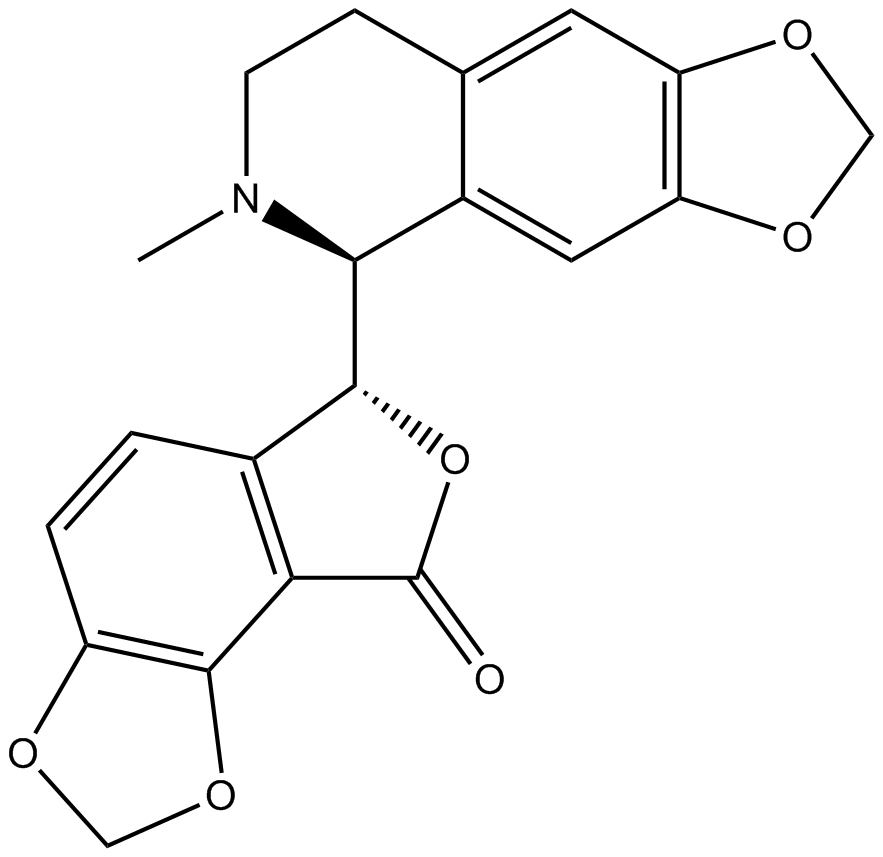(+)-Bicuculline (Synonyms: NSC 32192) |
| Catalog No.GN10745 |
(+)-Bicuculline est un antagoniste compétitif sensible à la lumière du récepteur GABA-A.
Products are for research use only. Not for human use. We do not sell to patients.

Cas No.: 485-49-4
Sample solution is provided at 25 µL, 10mM.
(+)-Bicuculline is a light-sensitive competitive antagonist of GABA-A receptor.
References:
[1]. Zahm DS, et al. Comparison of the locomotor-activating effects of bicuculline infusions into the preoptic area and ventral pallidum. Brain Struct Funct. 2014 Mar;219(2):511-26.
[2]. Johnston GA. Advantages of an antagonist: bicuculline and other GABA antagonists. Br J Pharmacol. 2013 May;169(2):328-36.
Average Rating: 5 (Based on Reviews and 30 reference(s) in Google Scholar.)
GLPBIO products are for RESEARCH USE ONLY. Please make sure your review or question is research based.
Required fields are marked with *




